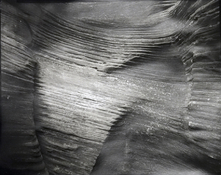Multigrade paper is a mix of a blue sensitive emulsion and a blue & green sensitive emulsion.
So why not a multigrade film? Blue sensitive films are used for copy work and orthochromatic films are part of the new retro sensibility. Mix the two emulsions together and bingo, MG film.
You could have a new version of the Zone system using blue/green filtration rather than development to control contrast. Great for applying the ZS to 120 & 35mm where you can't separate frames for individual development.
On the downside you would have to resign yourself to white skies in your pictures. And women wearing red lipstick are going to look a bit weird.
So why not a multigrade film? Blue sensitive films are used for copy work and orthochromatic films are part of the new retro sensibility. Mix the two emulsions together and bingo, MG film.
You could have a new version of the Zone system using blue/green filtration rather than development to control contrast. Great for applying the ZS to 120 & 35mm where you can't separate frames for individual development.
On the downside you would have to resign yourself to white skies in your pictures. And women wearing red lipstick are going to look a bit weird.






